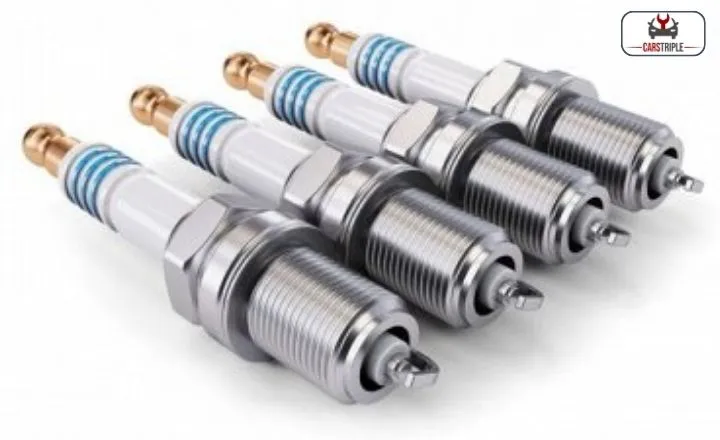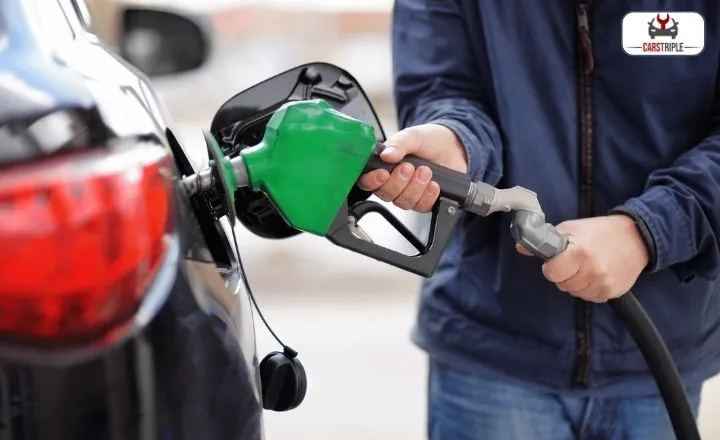The spark plug non-fouler might just be the solution you’ve been searching for. Whether you’re a seasoned car enthusiast or someone who simply wants to keep their vehicle running smoothly, understanding the ins and outs of this small yet mighty device can make a world of difference in your driving experience.
Enter the spark plug non-fouler—a clever little gadget that has been saving drivers from spark plug fouling woes for decades. In this guide, we’ll explore everything you need to know about spark plug non-foulers, from how they work and why they’re essential to troubleshooting tips and installation guidelines.
What Is A Spark Plug?
A spark plug is a small but essential component of an internal combustion engine, responsible for igniting the fuel-air mixture to initiate the power stroke.
This seemingly simple device plays a crucial role in the smooth functioning of an engine, and its design has evolved to meet the demands of modern vehicles. Interestingly, one lesser-known accessory related to spark plugs is a non-fouler, which acts as a spacer to prevent fouling and improve performance.
The evolution of spark plug technology has seen advancements in materials, electrode designs, and heat ranges to cater to different engine requirements. Despite these improvements, problems like fouling can still occur due to various factors, such as low-speed driving or rich air-fuel mixtures.

This is where non-foulers come into play; they allow for better protection against carbon buildup by providing additional space between the spark plug and the cylinder head. As vehicle enthusiasts continue to seek ways to optimize engine performance, understanding the role of non-foulers may hold new significance in maintaining efficient ignition systems.
A Brief Introduction Of Spark Plug Non-Fouler
The spark plug non-fouler is a small but essential tool that can solve a frustrating problem for many vehicle owners. When spark plugs become fouled with carbon deposits, oil, or other residues, they can misfire and cause engine performance issues.
This is where the non-fouler comes into play. It acts as a spacer between the spark plug and the cylinder head, allowing the spark plug to sit slightly further out of reach of any potential fouling substances.
What’s particularly fascinating about the non-fouler is its simple yet ingenious design. Extending the reach of the spark plug creates a smaller space for debris to accumulate, reducing the risk of fouling and allowing for consistent and reliable ignition.
This can be especially beneficial in older vehicles with high mileage or those prone to engine buildup. While it may seem like a modest component in comparison to other automotive parts, the spark plug non-fouler proves its worth by helping to maintain optimal engine performance and prolonging the life of vital ignition components.
5 Ways To Tell Your Spark Plug Is Fouled
1. Poor Engine Performance
1. Is your car struggling to accelerate, experiencing rough idle, or showing reduced fuel efficiency? These are common signs of poor engine performance, often caused by fouled spark plugs.
The smallest yet most critical components in your engine, spark plugs, play a significant role in igniting the air-fuel mixture. When they become fouled with carbon deposits over time, their ability to generate a strong and consistent spark is compromised, leading to poor engine performance.
2. Due to decreased power and sluggish acceleration, an overlooked consequence of fouled spark plugs is potential damage to other engine components. The incomplete combustion resulting from faulty spark plugs can lead to increased emissions and a buildup of harmful substances within the exhaust system.
3. Regular inspection and maintenance can help identify early signs of fouling and prevent more serious issues down the road.
By staying informed about 5 ways to tell if your spark plug is fouled—such as rough idling, misfires under load, excessive fuel consumption, and lack of acceleration power when passing vehicles or climbing hills—drivers can take necessary actions before their engine’s performance takes a nosedive.

2. Difficulty Starting the Engine
If you find yourself struggling to start your engine, one possible culprit could be a fouled spark plug. A fouled spark plug can lead to difficulty starting the engine, causing frustration and inconvenience for the vehicle owner.
One way to tell if your spark plug is fouled is by examining it for any buildup of carbon or oil deposits. Another sign could be an irregular engine idle or a noticeable decrease in fuel efficiency. Additionally, if you experience frequent misfires or rough running of the engine, it might indicate a fouled spark plug.
There are ways to address this issue proactively and prevent future occurrences of a fouled spark plug. Regularly checking and cleaning the spark plugs can help maintain their performance and prevent them from becoming fouled. Using high-quality fuel and additives designed to clean the combustion chamber can also contribute to preventing carbon buildup on the spark plugs.
Ensuring that all components of the ignition system are in good condition will help promote efficient combustion and reduce the likelihood of encountering difficulty starting the engine due to a fouled spark plug.
3. Reduced Fuel Efficiency
Reduced fuel efficiency is a common problem that many drivers experience, often leading to frustration and increased expenses at the gas pump. One of the most overlooked culprits of reduced fuel efficiency is a fouled spark plug.
5 signs to look out for include rough idling, engine misfires, difficulty starting your car, decreased acceleration, and poor fuel economy.
When a spark plug becomes fouled with deposits or carbon buildup, it can lead to incomplete combustion in the engine cylinders, resulting in wasted fuel and reduced power. Regularly checking and replacing spark plugs can help improve fuel efficiency and extend the life of your vehicle’s engine.

Monitoring your spark plugs and other factors such as driving habits, air filter cleanliness, tire pressure, and vehicle maintenance schedules also play critical roles in maximizing fuel efficiency.
By being attentive to these details and addressing any issues promptly, you can enjoy better mileage from every gallon of gas while also reducing harmful emissions into our environment.
4. Rough Idling
Rough idling can be a frustrating and concerning issue for many drivers. One common culprit for rough idling is a fouled spark plug, which can disrupt the smooth combustion process in the engine. Identifying the signs of a fouled spark plug early on can help prevent further damage to your vehicle and restore smooth operation.
Here are 5 ways to tell if your spark plug is fouled:
- First, pay attention to decreased fuel efficiency and an increase in fuel consumption, as this could indicate inefficient combustion due to a fouled spark plug.
- Second, listen for irregular engine noise or misfiring during acceleration; these symptoms often point toward ignition problems caused by fouling.
- Third, keep an eye out for difficulty starting your vehicle or experiencing frequent stalling, both of which could indicate that your spark plugs need attention.
- Fourth, if you notice an unpleasant smell, such as rotten eggs, coming from your exhaust pipe, it may be due to incomplete combustion caused by faulty spark plugs.
- Finally, if you see black sooty deposits on the tip or around the insulator of the spark plug during a routine inspection, it’s likely that they are fouled and in need of replacement.
5. Check the engine light.
The dreaded check engine light can spark anxiety in even the most experienced drivers. While many assume it’s an indication of a major problem, it often alerts to minor issues like a fouled spark plug.
A misfiring spark plug can lead to decreased fuel efficiency, rough idling, and difficulty starting your car. It’s important to recognize the signs of a fouled plug early on to avoid more serious engine problems down the line.
One way to tell if your spark plugs are fouled is by paying attention to your vehicle’s performance. If you notice a decrease in power or acceleration, it could be attributed to faulty spark plugs. Additionally, keep an eye out for increased fuel consumption or a rough idle as these may indicate that your spark plugs are no longer functioning optimally.
How to Install a Spark Plug Non-Fouler?
- Start by removing the existing spark plug from the engine using a socket wrench and carefully placing it aside.
- Take the spark plug non-fouler and apply an anti-seize compound to its threads to prevent sticking and ensure future removal is easier.
- Carefully thread the non-fouler onto the spark plug hole, then re-insert the spark plug into the non-fouler. Tighten them both securely with your socket wrench to complete the installation process.
Installing a spark plug non-fouler can be a simple yet effective solution for addressing fouling issues in your engine. By following these steps, you can proactively prevent fouling and maintain optimal performance.
It’s important to use caution during installation and make sure everything is securely tightened to avoid any potential issues down along the road.
How to Remove a Spark Non-Fouler?
- To remove a spark plug non-fouler, start by locating the non-fouler attached to the spark plug on your vehicle. It’s usually found near the engine’s cylinder head.
- Once you’ve located the non-fouler, use a socket wrench and extension to securely grip the non-fouler and twist it counterclockwise to loosen it from the spark plug threads.
- If the non-fouler is tightened, apply some penetrating oil or rust dissolver to help loosen it before attempting to remove it again.
- After loosening the non-fouler, carefully unscrew it from the spark plug and inspect both for any signs of damage or wear.
- Clean the spark plug using a wire brush or compressed air if necessary before reinstalling or replacing it.
- Remember that proper maintenance of your vehicle’s spark plugs can contribute significantly to its performance and fuel efficiency
Do Spark Plug Non-Foulers Work?
Spark plug non-foulers, also known as anti-foulers, have been a popular solution for addressing spark plug fouling issues in vehicles. These small metal pieces are installed between the spark plug and the engine combustion chamber to prevent carbon deposits and oil from accumulating on the spark plug electrode.

While some users claim that non-foulers effectively reduce fouling and improve engine performance, others have found them to be only a temporary fix or even ineffective.
The effectiveness of spark plug non-foulers is the underlying cause of fouling. If fouling is primarily due to worn piston rings or valve stem seals causing excessive oil consumption, non-foulers may provide only a temporary improvement instead of solving the root problem.
Modern vehicle engines with efficient fuel delivery systems may not experience as much fouling in general, reducing the need for non-foulers.
What Does A Spark Plug Non-Fouler Do?
The spark plug non-fouler is a small but crucial component in maintaining efficient combustion within an engine. By reducing the risk of fouling, this device ensures that the spark plugs remain clean and functional, preventing misfires and rough idling.
This simple yet effective tool acts as a shield against carbon deposits and oil buildup, allowing for optimal spark plug performance and reliable ignition.
To understand the impact of a spark plug non-fouler, consider its role in promoting consistent fuel combustion. When spark plugs become fouled with carbon or oil, they are unable to produce a strong and timely spark, leading to incomplete fuel burning and decreased engine efficiency.
The non-fouler prevents these issues by minimizing the accumulation of contaminants around the tip of the spark plug, enabling smooth ignition processes that contribute to overall engine performance.
Do Spark Plug Non-Foulers Work On O2 Sensors?
Many car enthusiasts swear by the use of spark plug non-foulers as a potential solution. These small metal devices are designed to shield the spark plugs from oil and other contaminants, but some have suggested that they can also be used to space out the O2 sensor, reducing its exposure to exhaust gases and potentially solving sensor fouling issues.
While some drivers report success with this DIY solution, there is no scientific evidence or manufacturer endorsement to support this practice.
Using non-foulers on O2 sensors may affect their ability to accurately measure air-to-fuel ratios and lead to decreased performance and increased emissions. Therefore, it’s important to approach this fix with caution and seek professional advice before attempting any modifications.
Do Spark Plug Non-Foulers Really Work?
When it comes to spark plug non-foulers, many car enthusiasts and mechanics swear by their effectiveness in addressing spark plug fouling issues.
These small metal devices are designed to prevent the build-up of carbon deposits on spark plugs, allowing for better engine performance and fuel efficiency. The effectiveness of spark plug non-foulers can vary depending on the specific circumstances.
Some experts argue that while non-foulers can help temporarily alleviate certain fouling issues, they may not be a definitive solution for all cases. Factors such as engine condition, driving habits, and fuel quality can also play a significant role in spark plug fouling.

Therefore, it’s essential to consider these variables and consult with a professional before solely relying on non-foulers as a fix-all solution for spark plug issues.
While spark plug non-foulers may provide some benefit in certain situations, it’s crucial to approach them with realistic expectations and factor in other potential contributing factors to ensure optimal engine performance.
What Spark Plug Is Best For Fouling?
These small devices are designed to create additional space between the spark plug and the combustion chamber, reducing the risk of fouling. This extra clearance helps to prevent carbon buildup and oil contamination that can lead to misfires and performance issues.
It’s important to note that not all spark plug non-foulers are created equal. Some materials may be more effective at resisting heat and corrosion, leading to longer-lasting results.
The specific engine type and operating conditions are crucial when choosing the best non-fouler for your spark plugs. Investing in high-quality non-foulers can save you money in the long run by extending the life of your spark plugs and maintaining optimal engine performance.
Conclusion
The spark plug non-fouler is a simple yet effective solution for addressing spark plug fouling issues in vehicles. By providing an additional space for the spark plug to sit, it reduces the risk of fouling and helps maintain optimal engine performance.
Whether you drive an older vehicle prone to fouling or a high-performance car with modified engines, using non-foulers can prevent costly repairs and downtime. This affordable and easy-to-install device offers a practical way to improve combustion efficiency and extend the life of your spark plugs.
FAQS
What is a spark plug non-fouler?
A spark plug non-fouler is a device designed to prevent spark plugs from fouling or becoming coated with deposits.
How does a spark plug non-fouler work?
The non-fouler creates a small chamber around the spark plug, allowing it to operate in hot or fouling conditions without losing performance.
Can I install a spark plug non-fouler on any vehicle?
Yes, as long as the thread size matches and there is enough clearance around the spark plug.

